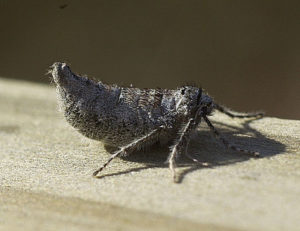Fall Cankerworm Control
go.ncsu.edu/readext?433180
en Español / em Português
El inglés es el idioma de control de esta página. En la medida en que haya algún conflicto entre la traducción al inglés y la traducción, el inglés prevalece.
Al hacer clic en el enlace de traducción se activa un servicio de traducción gratuito para convertir la página al español. Al igual que con cualquier traducción por Internet, la conversión no es sensible al contexto y puede que no traduzca el texto en su significado original. NC State Extension no garantiza la exactitud del texto traducido. Por favor, tenga en cuenta que algunas aplicaciones y/o servicios pueden no funcionar como se espera cuando se traducen.
Português
Inglês é o idioma de controle desta página. Na medida que haja algum conflito entre o texto original em Inglês e a tradução, o Inglês prevalece.
Ao clicar no link de tradução, um serviço gratuito de tradução será ativado para converter a página para o Português. Como em qualquer tradução pela internet, a conversão não é sensivel ao contexto e pode não ocorrer a tradução para o significado orginal. O serviço de Extensão da Carolina do Norte (NC State Extension) não garante a exatidão do texto traduzido. Por favor, observe que algumas funções ou serviços podem não funcionar como esperado após a tradução.
English
English is the controlling language of this page. To the extent there is any conflict between the English text and the translation, English controls.
Clicking on the translation link activates a free translation service to convert the page to Spanish. As with any Internet translation, the conversion is not context-sensitive and may not translate the text to its original meaning. NC State Extension does not guarantee the accuracy of the translated text. Please note that some applications and/or services may not function as expected when translated.
Collapse ▲The fall cankerworm, also known as the inchworm, is an insect native to our area. During the first cold temperatures in late fall (late November), the adult moth stage of the cankerworm leaves its cocoon in the soil. The female moth crawls up the trunks of trees looking for a high point or branch to lay her eggs. During early spring, the tiny caterpillars hatching from the fall cankerworms emerge to feed as leaves begin to open (around late February), destroying the tree’s young leaves and buds. While this does not generally kill the tree, repeated feasting from the worms causes the tree to use its stored energy sources, and over repeated seasons, this can weaken the tree. After they have finished feeding, they string down from the tree on a silken thread and bury into the soil making a new cocoon in the ground.
Cankerworm infestation can be controlled through either chemical sprays done in the spring when the caterpillars are feeding or through tree banding in the fall. Sprays containing Bacillus thuringiensis (B.t.), which cause the caterpillars to stop eating and die a few days later, can be sprayed on foliage of small trees. Large trees require professional spray equipment and extensive cost. Other foliage sprays include Liquid Sevin (carbaryl), which requires reapplication several times every 5 days, is harmful to beneficial insects, and may result in a worse situation in upcoming seasons, as well as insecticidal soap, which kills only soft-bodied insects who come in contact with the spray and requires 3 sprays per week. Additional products containing spinosad, bifenthrin, permethrin, or chlorantraniliprole may be used. Large area infestation may require spraying by air from a plane or helicopter.
Tree banding blocks the wingless females from crawling up the trees to lay eggs and should be in place from mid-November through the end of January. Tanglefoot™ or another sticky agent can be applied to the band around the tree and may need to be “refreshed” periodically.
Fall female moth stage Spring inchworm





